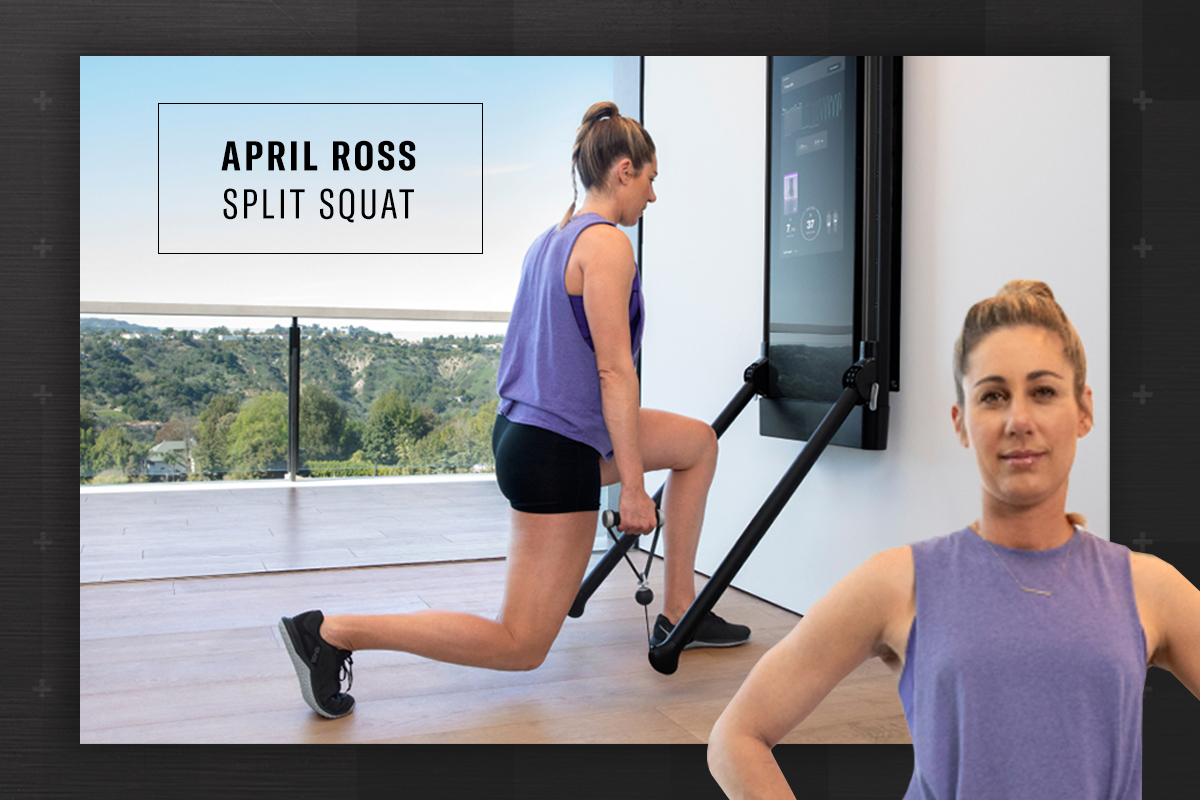In this episode of The Unlock, the champion beach volleyball player explains why the split squat powers up her game.

As a professional beach volleyball player, April “The Boss” Ross has one of the meanest jump serves in the world. The 6-foot-1 defender is also known for racking up digs and kills; that is, her ability to prevent the ball from hitting the ground on her side of the net, and to send unreturnable attacks to the other. At age 39, the former world champ—who credits strength training for her longevity—is entering her 17th professional volleyball season.
In this episode of The Unlock, a series that highlights one key move that takes even an elite athlete’s game to the next level, Ross share’s her go-to exercise for training power in the position she is most often in on the volleyball court: the split squat.
The Benefit
So many of the movements Ross does on the volleyball court involve being in a lunging position, with one leg in front of the other and her knees bent. In that position, she must be both powerful to jump out of the sand and stable to make plays on the ball. “Everything I do is a lunge, whether it’s setting the ball, which I do a lot of, or going for the ball on defense,” she says. “I love the split squat because it enables me to be really strong in that position.”
The How
- First, adjust the Tonal arms to the bottom height and attach the handles.
- Face Tonal with a handle in each hand.
- Drop into a half-kneeling position with your back knee on the mat, back toes tucked and front knee directly over the front ankle.
- Aggressively push the floor away with the front foot as you stand tall, keeping the feet in the same position, with about 90 percent of your weight on the front foot and 10 percent on the back.
- Think of your torso moving straight up and down like an elevator as you power up and lower down with control, until the back knee barely touches the mat, and repeat.
The Key Point
The split squat is one of the most important moves we can do to develop vertical ground force, explained Tonal Sports Performance Specialist Max Artsis. However, doing so on a flat surface is much easier than it is on sand, where Ross makes her living. “Sand is such a soft surface, and it reacts significantly differently for an athlete than hardwood or grass,” said Artsis. “Because there is so much cushion, it is much harder to drive up.” Artsis also notes that while people often train moves done with two legs, most sports—like volleyball—are played predominantly on one leg. The split squat teaches Ross to load power asymmetrically and gives her more stability in the shifting sand.
The Level Up
Using Chains Mode will accentuate the concentric, or upward, part of the movement. “We drop with control, but then we drive up aggressively, forcing a significant amount of overload on the body,” says Artsis. “That way, when you put the weight down, that post-activation potentiation makes you feel like you can jump through the roof.” More simply put, the brain thinks it’s battling more weight than it is, allowing you to jump higher.
The Scale Down
If you want to focus on injury prevention and loading the ligaments and tendons of each individual leg, try Eccentric Mode. “This will overload the lowering portion of the exercise and under load the way up, forcing you to stabilize,” says Artsis. He also suggests trying out Smart Flex—which will overload the areas of the exercise in which you are your strongest, and help you in the areas in which you are weakest to perfect your form.


